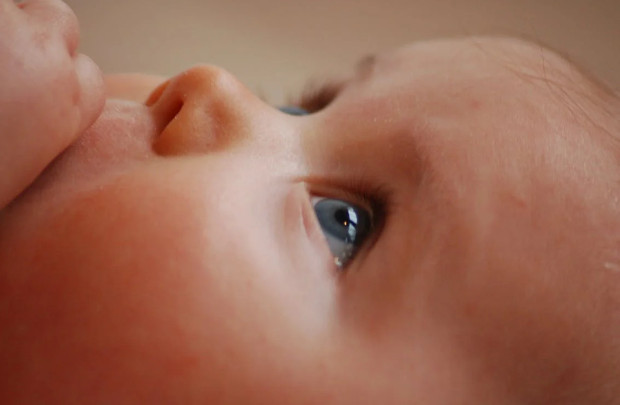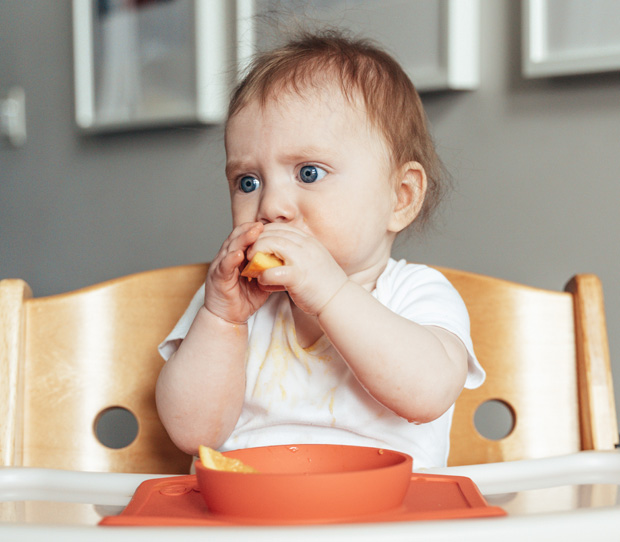How to Spot Food Allergies in Babies

How to Spot Food Allergies in Babies
This is article is by Davina Steel who is an award-winning former gluten-free bakery owner and scientist committed to providing accessible knowledge and support to children with food allergies. In this article Davina Steel shares helpful advice for how to spot food allergies in babies.
Feeding infants can be challenging and what should be delightful, bonding moments can become a stressful and anxious time for you and your baby. With food allergies on the increase, it’s easy to assume that anything out of the norm when feeding means your little one has a food allergy.
What’s Normal?
What is normal anyway? Whilst it’s natural to worry about your baby, many feeding problems are common and transient. But you do need to recognise the difference between typical feeding problems and those that really do indicate an underlying immune problem.
- Colic: Many babies refuse to feed from time to time. This might be due to colic (excessive crying or fussiness), which often peaks around six weeks, but declines after three to four months. It might be due to digestive discomfort, leading you to suspect an allergy.
- Reflux: Another easy one to mistake for allergy is reflux, where your baby spits or vomits during or after feeding. Again, this is a common occurrence in babies.
- Constipation or diarrhoea: Changes in stool consistency can occur due to intolerances or allergies, but it’s normal for their poo to change consistency from time to time. If this persists you should consult your doctor, who can advise on whether it might be an allergy.
- Skin rashes or eczema: These are more common than you might realise and mostly are not related to food or allergies, though an allergy might make them worse.

Common Symptoms of a Food Allergy in Infants
There are reasons you might be confused by your little one’s reactions, as many allergy symptoms resemble common feeding problems.
- Skin reactions: Hives, redness or swelling round the mouth can indicate allergy.
- Diarrhoea, vomiting or abdominal pain during or after feeding can be caused by food allergies.
- Respiratory issues: As with swelling around the mouth, coughing, wheezing or difficulty breathing may signal a severe allergic reaction.
- Anaphylaxis: Whilst it is rare in infants this life-threatening reaction can occur and requires IMMEDIATE medical attention. You can find easy-to-understand details on how to recognise and deal with food allergies in children in my book (see end of article). Anaphylaxis is rare, but is always an emergency, so it’s wise to become familiar with the symptoms, whilst not driving yourself crazy over something that is very unlikely to happen.

Interpreting Symptoms
Many of these symptoms can mimic common feeding problems. For instance, a rash may arise from a food allergy, but might simply be caused by dribbling, which can dry the skin and make it sore.
If you are concerned, you should mention it to your health visitor, who will be armed with the latest knowledge. Keeping a food diary can help put your mind at rest in the meantime. This will track you baby’s diet alongside any symptoms, providing valuable information for your health visitor.
IMMEDIATE REACTIONS
These are often referred to as Immunoglobulin E (IgE) mediated allergies, which involves your immune system producing antibodies in response to certain foods. The reaction is immediate. Most common triggers of this type are milk, eggs, peanuts, tree nuts, soy and wheat.
Symptoms: These typically appear within minutes to hours after feeding and may include:
- Hives: Raised itchy lumps that can appear anywhere on the body.
- Swelling: Especially in the face, lips or throat.
- Tummy distress: Nausea, vomiting or diarrhoea.
- Breathing difficulties: Coughing, wheezing or problems breathing.
Diagnosis: You should see a paediatrician or allergist to evaluate your child’s symptoms. Tests might include a skin prick test or blood tests to detect specific antibodies in the blood.
DELAYED REACTIONS
These might be caused by infection, medications, heat or stress, all of which can trigger hives in infants. It’s often called a non-IgE allergy, which means that it doesn’t involve the ‘E’ type antibodies, but different parts of the immune system. These reactions are often delayed. They are more commonly associated with cow’s milk protein and soy protein.
Symptoms: These typically appear a while after feeding, so can be difficult to pin down to a particular reason:
- Tummy problems: Chronic (persistent) diarrhoea, constipation or blood in the poo (it will look very dark.
- Eczema: Persistent skin rashes which may worsen with certain foods.
- Weight: Weight loss or inadequate growth.
Diagnosis: Typically involves an elimination diet, where suspected allergens are removed from the infant’s diet. You should closely monitor symptoms, noting any improvements. After a set time (typically a week to a month) the food can be reintroduced to check for reactions. It is important to do this under the guidance of your health visitor to ensure you are reintroducing food in a safe and sensible manner.
NON-ALLERGIC CAUSES
Rashes in infants are not always caused by allergies. They may be due to:
- Contact dermatitis: This is from skin contact with irritants, like soap or dribble.
- Infection: Viral rashes, such as chickenpox or roseola may look like an allergic reaction.
- Heat rash: Small bumps that occur in hot or humid weather.
This overview should give you a framework to check your baby and decide when you need to ask your clinician for more advice.
For a simple explanation of food allergies for children and their parents, see ‘Have you ever seen a Bee with Hives?’ Covering all you need to know about food allergies and how to deal with them.

About Davina Steel
Davina Steel’s lifelong fascination with scientific communication began as soon as she could write. Following a first-class degree in Biochemistry and Applied Microbiology, she became a research scientist. Over her career, she was also the Managing Editor of a Biotechnology Journal and explained science for children’s magazines and websites. After developing severe gluten intolerance following cancer treatment, Davina developed award-winning gluten-free breads. Davina is also the author of the new book, Have You Ever Seen a Bee with Hives, all you need to know about food allergies and how to deal with them.
Guest Article.




